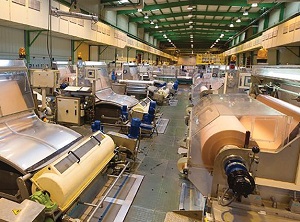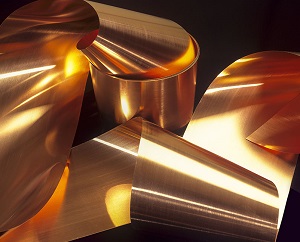Electrolytic Copper Foil
MAGNETO® Anodes are a critical part of the Copper Foil manufacturing process.
- About Magneto
- Locations
- Contact Us
The story of Magneto Special Anodes begins in 1957, when Dr. Henri Beer applied for the patent of the titanium anode. Since then, the company has been through tremendous development.

Evoqua Magneto has three locations based across the globe to support our customers:
Schiedam, Netherlands
Suzhou Industrial Park, Jiangsu Province, China
Union NJ, USA

Contact Us to learn more about our Special Anode solutions.

As one of the basic materials of electronic industry, electrolytic copper foil is mainly used to manufacture printed circuit board (PCB), lithium-ion batteries, widely used in home appliances, communication, computing (3C), and new energy industry. In recent years, more stringent and newer requirements are required for copper foil with the development of 5G technology and lithium battery industry. Very low profile (VLP) copper foil for 5G, and ultra-thin copper foil for lithium battery dominate the new development direction of copper foil technology.
Copper Foil Production Process

Although the specifications and properties of electrolytic copper foil can vary with each manufacturer, the process remains essentially the same. Generally, all foil manufacturers dissolve electrolytic copper or waste copper wire, with the same purity electrolytic copper used as the raw material, in sulfuric acid to produce an aqueous solution of copper sulfate. After that, by taking the metal roller as the cathode, the metallic copper is electrodeposited on the surface of the cathodic roller continuously through electrolytic reaction. It is peeled from the cathodic roller continuously at the same time. This process is known as the foil producing and electrolysis process. The stripped side (smooth side) from the cathode is the one visible on the surface of the laminated board or PCB, and the reverse side (commonly known as the rough side) is the one that is subject to a series of surface treatments and is bonded with resin in the PCB. The double-sided copper foil is formed by controlling the dose of organic additives in electrolyte in the process of producing copper foil for lithium battery.
Electrolysis Principle

During electrolysis, the cations in the electrolyte migrate to the cathode, and are reduced after obtaining electrons on the cathode. The anions are oxidized after migrating to the anode and losing electrons. Two electrodes are connected in the copper sulphate solution with direct current. Then, it will be found that copper and hydrogen are separated on the cathode. The reaction is as follows:
Cathode: Cu2+ +2e → Cu
2H+ +2e → H2↑
Anode: 4OH- -4e → 2H2O + O2↑
2SO42-+2H2O -4e → 2H2SO4 + O2↑
After treatment of the cathode surface, the copper layer deposited on the cathode can be peeled off, to obtain a certain thickness of copper sheet. The copper sheet with certain functions is called copper foil.
